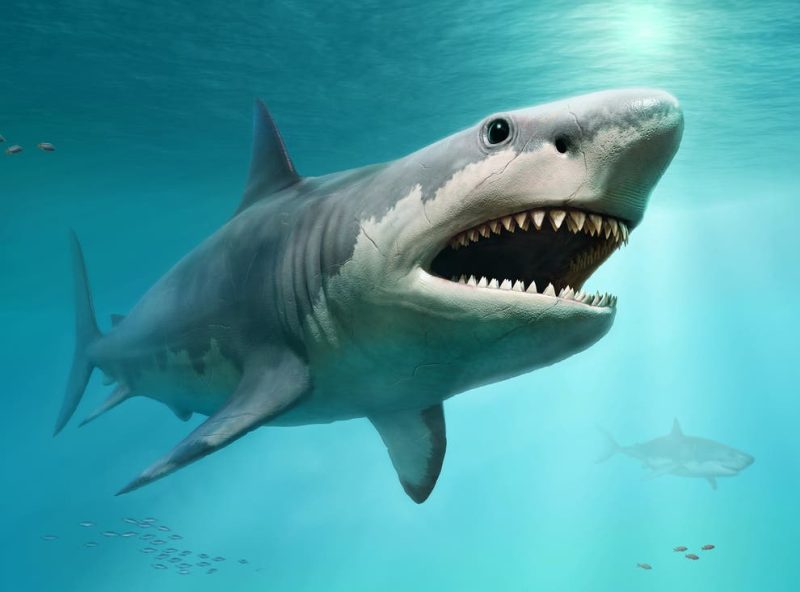Scientists have admitted they are still no closer to knowing for certain what a Megalodon – the largest shark that ever lived – looked like.
While the giant creatures swam the Earth’s oceans up to 3.6 million years ago, only fossilised teeth and vertebrae have ever been found – leading experts to conclude they reached lengths of up to 65ft. For comparison, a typical Great White can be as long as 20ft but are usually around 15. They are often portrayed as gigantic monsters, such as in the 2018 sci-film film The Meg, that resemble large Great Whites, but experts have always insisted their body type was uncertain.

Image Source: Independent
And in a new study, published in the international journal Historical Biology, researchers conclude that all previously proposed body forms of the giant shark remain nothing more than “speculation”. They added they are still hopeful that a full Megalodon skeleton – what they describe as the “ultimate treasure” – will one day be found, allowing more concrete findings.
“The study may appear to be a step backwards in science, but the continued mystery makes palaeontology a fascinating and exciting scientific field,” one of the authors, Kenshu Shimada, of DePaul University in Chicago, said.
The reason so little of the Megalodon’s – officially called Otodus megalodon (O. megalodon) – remains have ever been discovered is that shark cartilage “doesn’t preserve well,” according to Phillip Sternes, a UCR organismal biologist and lead author of the study.
Traditionally, researchers have modelled Megalodon bodies on those of modern Great Whites, which are partially warm-blooded and belong to the Lamniforme shark order. Megalodons also belong to this order, and it is believed they shared this partial warm-bloodedness.“Great Whites are among the fastest swimming sharks, so Megalodons were likely also big, fast sharks you would not want to run into in the open ocean,” Mr Sternes explained.
There are eight families of Lamniformes, and 15 species. Previous research, based on two-dimensional geometric shape analyses, took five species of warm-blooded Lamniformes, averaged their fin and body shapes and proposed a general model for Megalodons.
Mr Sternes and his team wanted to understand whether the five species used to determine a Megalodon’s shape differed somehow from the rest of the order, which includes some sharks that are cold-blooded.
The researchers compared the five species to each other, and to the rest of the Lamniform order. Using detailed field guide drawings, they performed quantitative comparisons of the sharks’ fin, head and body shapes.
However, they found no general patterns that would allow them to tease out body shape differences. “Warm bloodedness does not make you a differently shaped shark,” Mr Sternes said. “I encourage others to explore ideas about its body shape, and to search for the ultimate treasure of a preserved Megalodon fossil.”Due to this, he insisted “all previously proposed body forms of Otodus megalodon should be regarded as speculations from the scientific standpoint”.
Source: New Atlas
Related Posts:
- Fish can perform addition and subtraction, finds study
- Rock found in 2011 confirmed to be hottest rock on…
- Rare and deadly virus found in ticks in 6 US states: Study
- Extremely rare blanket octopus spotted in Great…
- 6 Travel Essentials to Have Each Time You Are on the Road
- 10 Best Queen Size Camping Cot 2024 - Sleep Like Royalty










